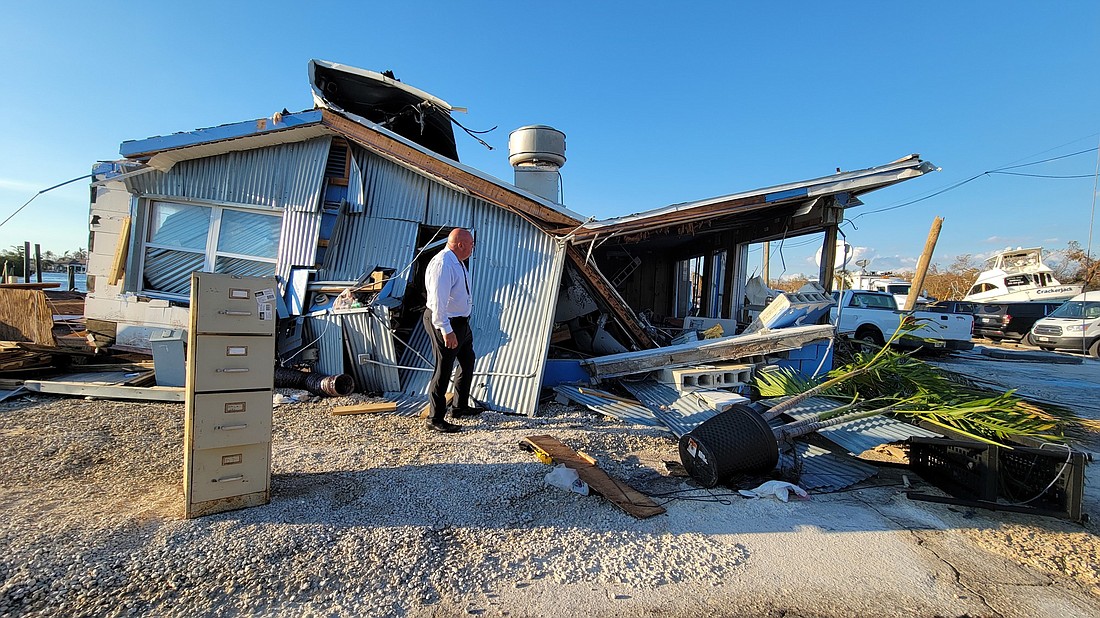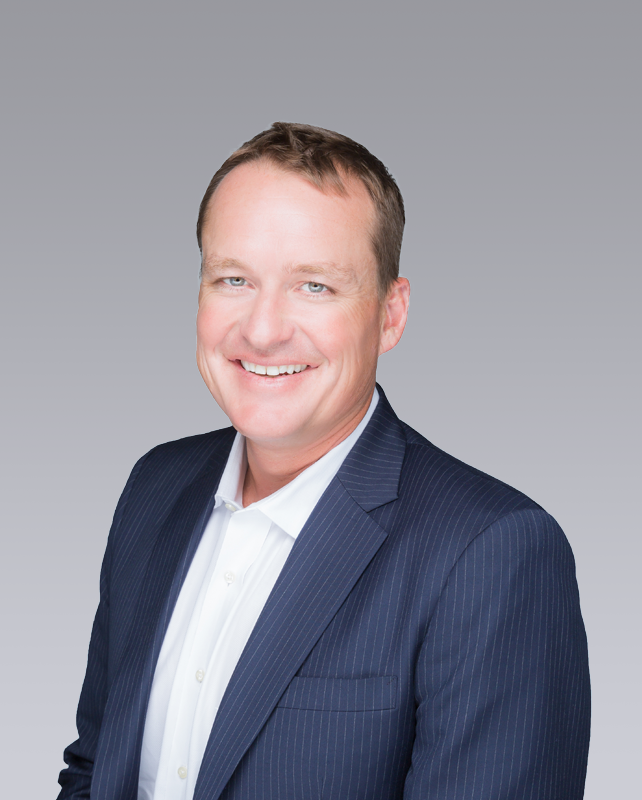- December 25, 2024
-
-
Loading

Loading

About a month after Hurricane Ian tore through Florida, a new reality is setting in as the state begins the long road to recovery and a vision of the future begins to emerge.
This future is one where building codes are reimagined and a property insurance system is reinvented all while the hunt for affordable housing options becomes even more desperate and supply chains are choked.
Florida has seen unprecedented growth in the years following the pandemic, but in the wake of the Category 4 hurricane that devastated large parts of the state a consensus is building that what happens next will need to be about more than rebuilding homes and cleaning debris.
What’s needed is a change in how the state prepares for storms that, given environmental realities, are more often than not going to mirror the strength and impact of Ian. This means building codes are going to have become more stringent and hard questions are going to have to be asked about coastal development.
While Florida will come through this, as it has in the past, it is clear the economic impact of the storm — with estimated insured losses expected to be about $74 billion — and the changes the state will have to deal with, will reach far beyond those directly affected by the storm and reach those who, a month later, believe its business as usual.
“I was born and raised here,” says Lee County Commission Chairman Cecil Pendergrass. “This is the storm that my parents and grandparents always dreaded. This is the storm we never wanted to happen.”
One constant when you talk to people who’ve seen the devastation in Southwest Florida firsthand is how the homes built after Hurricane Andrew in 1992 fared compared to those built in the years before.
You will hear people say that the damage almost looked random, as if the storm picked one home over the other. The reason for that is that after Andrew, Florida overhauled its building codes to address the high winds that come with the most intense of hurricanes. So, the homes built in the decades after that storm were better prepared for this one.
But they weren’t completely immune.
What caused much of the wreckage to homes and businesses during Ian was storm surge. And given that sea levels are rising and that warmer waters in the Gulf of Mexico are strengthening storms as they come in from the Caribbean, some officials believe state lawmakers and federal officials will need to change building codes to address the new reality.
‘I grew up here. This is the storm that my parents and grandparents always dreaded. This is the storm we never wanted to happen.’ Cecil Pendergrass
Sean Sullivan, executive director of the Tampa Bay Regional Planning Council, says science tells us the intensity of storms is going to be greater moving forward and that lawmakers, working with private industry, need to be prudent about where to build and what materials are used. A key is to enhance building codes to protect properties prone to storm surge. “Moving forward, I think it’s important that government and the private sector put their heads together and come up with codes that will allow structures to become more resilient,” Sullivan says.
To that end, the regional planning council has created the “Resilient Shorelines Model Ordinance.” This is a template local government can use when making updates to existing plans and laws. The template, according to the council, “establishes shoreline type standards, a coordinated policy for protecting and preserving natural shorelines, promoting living and hybrid shorelines and defining appropriate locations and land-use types for implementing seawalls and hardened structures.”
While the focus now is, naturally, on what’s happening in the most devastated areas, rebuilding is going to have a far-reaching effect on Florida’s construction industry —even before a conversation about building codes.
For the past couple of years, the struggles builders, developers and contractors have faced getting building supplies and materials has been well documented. Adding thousands of homes in need of being rebuilt to the dozens of development projects already in the works is likely to exacerbate those issues.
And the ones who may face the worst are the ones in the most need, says Zahra Antaramian, field operations director at ADG4, a Naples real estate development and management company.

“At the end of the day, contractors are going to go back to business as usual. And whoever is screaming the loudest or paying the most is going to be who ends up getting the materials. And yeah, that’s the way it works. That’s the way it’s always worked. Right?”
Homeowners whose houses are uninhabitable and in need of repairs, furniture removal, water remediation, carpet removal and replacement, as well as construction and project management, have hired ADG4 since Ian. Antaramian worries the delays in getting materials — and some projects getting preferential treatment — will make it even tougher for people to access workforce housing. Her concern is properties destroyed or condemned won’t get the attention and housing costs will skyrocket.
“It’s going to be important that this community pulls together, the construction community, the development community, everyone has to pool together to figure out a solution,” says Antaramian, whose father, the late Jack Antaramian, was a prominent Naples developer who built multiple resorts and other projects on tony Fifth Avenue South. “Because we cannot allow that problem that was already bad to become worse. It just isn’t right at this point to allow all the housing that was available to now be condemned and to put a stranglehold, basically, on that housing.”
Greg Main-Baillie, executive managing director for the Florida development services group at the commercial real estate firm Colliers, however, believes potential supply issues will work themselves out over time. Main-Baillie oversees Colliers' construction and development projects in South Florida.
Main-Baillie says certain products like cement, tarmac and mechanical equipment remain difficult to get quickly with manufacturers setting benchmark orders and having to get on long lists for deliveries. That is not likely to change anytime soon. And while there will be an immediate need for baseline materials, he believes in six to nine months the market will have settled down a bit.
Where his optimism, if that’s not too strong of a word, lies is in the fact is that there is not going to be an instant flood of demand for materials, giving the market time to adjust.

Main-Baillie says any property that needs to be rebuilt will need to go through an architectural design and approval process that, if all goes well, could take as long as six months to complete. “From that perspective, I hope that the construction industry, from the commodity supply constraint standpoint, would have worked itself out by that time,” he says.
The important phrase in determining what happens next in Florida is “if all goes well.”
Speaking to Pendergrass, the Lee County commissioner, one gets the sense that given the magnitude of the damage in Southwest Florida, even in the best-case scenario we are a long way from anything going well.
Lee was one of the hardest hit counties in the state, leaving miles of property on or near the coast devastated. The city of Fort Myers alone estimates about $600 million in damages.

So as concerned as Pendergrass is about how the county will change and adapt, his day-to-day focus right now is on the recovery and taking the first early, tentative, steps that need to be taken to move forward. “Every day is a different day,” he says. “We’re still working with all the different agencies on everything, from getting the power back on the barrier islands to getting the road ways clear.”
As of Oct. 13, half the county is cleaned up and life is back to normal in some parts. But the barrier islands are far from OK.
Pendergrass says along with the homes, commercial and retail businesses and hotels were lost in south Lee, Captiva Island and beyond. So even those physically unharmed by the storm have lost jobs, along with those who lost both homes and work.
And then there are towns whose government centers, as well as the homes of public officials, have been wiped out. How, Pendergrass asks, can someone rebuild a home or reopen a business when there’s no one to write up a permit to rebuild?
“I mean, we’re having to really start from the bottom up.”